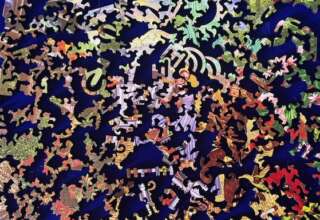
To better understand the role of women in promoting collaboration, I will return briefly to Eisler’s metaphor of the chalice and speak about the holding environment that is critical to the creation of a collaborative culture. Kets de Vries (2010) identifies the role of leaders in providing a “holding” environment for their followers. This connects with the original Object Relations model of the “holding” environment in psychotherapy and the psychodynamic proposal that effective leaders often provide a holding environment in which they hold or contains the anxiety of their followers for a period of time until the followers can handle the anxiety or until the leader has transformed the anxiety (often, I would suggest through the organization’s culture) into something that is manageable, actionable or at least understandable. This holding function operates for the leader much like the parent holds or contains the anxiety of her child until the child can handle it or until the anxiety is transformed (catalyzed) by the parent. To what extent, are women as leaders more likely than men to provide the container for organizational anxiety – to hold the tensions of the organization until they can be effectively addressed by others in the organization? Riane Eilser speaks to this same function when she writes about the chalice (in opposition to the blade). While the leader plays a critical role in providing this chalice to contain the anxiety of her followers, I can’t help but wonder about the psychological costs associated with holding the anxiety for other people – does this lead to psychological (or physical) burn-out among women (and men) who are the containers?
The Dance of Collusion
Collusion is a complex and often subtle process typically involving all parties in a relationship or group. Even if a participant is not actively involved in the collusion, the mere acquiescence to the collusion will exacerbate the collusive process. No one observing the parade route said anything about the emperor wearing no clothing. It was only the child who spoke up. This is a key point. To simply not say anything about what is happening in front of one’s own eyes is participation in the collusion. We find this operating, for instance, among those people who witness a crime. All too frequently, no one steps up to interrupt a crime—or even call the police to prevent the crime or enable the police to apprehend the criminal. Researchers have found that when a large number of people observe a crime there is even less likelihood that any one person will attempt to break up or report the crime. The sense of responsibility is distributed among many people and no one person accepts enough share of the responsibility to precipitate action. Everyone is colluding (and in some sense collaborating) in non-action.
Collusion is usually a dynamic involving everyone in the relationship, group or organization. The collusion is typically driven by fear: (1) fear that one will be ostracized from the relationship or group for disrupting the collusion by making an inappropriate comment or violating the norms of the system, (2) fear that confronting the collusion could lead to psychological or physical retribution, (3) fear that there will be tit-for-tat (if you reveal something about me, then I will reveal something about you) or (4) fear that I might be wrong and that what I see is really more about me than about what is happening in the relationship or group. At other times, the collusion occurs because no one is really aware that the collusion is in operation. It is assumed that the collusive process is simply “the ways things are done around here” or even more broadly “the way nature works.” This “natural” rationale is prevalent when the collusion involves race or gender, while the rationale regarding the way things are done around here is typically found in a setting with a very “thick” or “enmeshed” culture (where most of the behavior is dictated by a set of implicit and strongly enforced norms).
This lack of awareness tends to be closely interrelated with and enhanced by the dynamic of fear. We are most likely to be driven toward unawareness with regard to that which is ultimately most fearful. Sigmund Freud (1990) pointed this out many years ago in his book, Inhibitions, Symptoms and Anxiety, noting that at some level we are aware of that which we are unaware—for we have to know in some manner that something exists and is very scary (anxiety-provoking) if we are to “repress” and become unaware. To point back to an obvious example, the crowd must have been aware at some level that the emperor was naked and that to comment on the nudity could get them in trouble. They would not have been fearful of making a critical comment if they were not aware of both factors. The child wasn’t the only one to see that the emperor was naked; however, the child was the only one not to know (or at least not to assume) that it would be a bad thing to comment on the emperor’s nudity.









